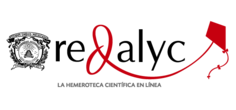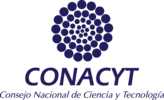Corruption, a one-way street? Internalization of bribery in Mexican Companies
Keywords:
Bribes, Corruption, Public sector and administration, Normalization of corruptionAbstract
In a country that suffers from systemic corruption, the interaction between companies and public servants is usually permeated by diverse acts that can go from bribery to the capture of the state by powerful private actors. That is, corruption is a two-way street where government and companies reinforce themselves. Through a survey of private companies in a Mexican city and after a series of in-depth interviews in two of them, this article shows how companies build routines and internal solutions that allow them to meet the demand of bribery from public officials. In other words, companies create stable and organized internal processes to pay bribes as a normalized act. Companies, facing requests for bribes, build an organizational process in which diverse internal actors participate and justify their actions, making these processes normal and stable routines for the company. These findings support the argument that in order to understand the phenomenon of corruption, it is necessary to link both the perspectives of the corrupt individuals and the one that observes it as a social phenomenon of exchanges, favors and reciprocities.Downloads
References
Ananad, Vikas, Blake Ashforth, Mahendra Joshi y Perry Martini (2004), “Business as usual: the acceptance and perpetuation of corruption in organizations”, Academy of Management Executive, 18(2), pp. 39-55. DOI:10.5465/AME.2005.19417904.
Ainslie, George (2001), Breaking-down of will, Cambridge, Cambridge University Press
Arellano, David (2017), “Corrupción como proceso organizacional: comprendiendo la lógica de la desnormalización de la corrupción” en Contaduría y Administración, 62, pp. 810-826. DOI:10.1016/j.cya.2016.01.005.
Arellano, David (2012), ¿Podemos reducir la corrupción en México? México, Centro de Investigación y Docencia Económicas.
Ashforth, Blake, Dennis Gioia, Sandra Robinson y Linda Treviño (2008), “Re-viewing organizational corruption”. Academy of Management Review, 33(3), pp. 670-684. DOI:10.5465/AMR.2008.32465714.
Ashforth, Blake y Vikas Ananad (2003), “The normalization of corruption in organizations”, Research in Organizational Behavior, 25, pp. 1-52. DOI:10.1016/S0191-3085(03)25001-2.
Bargh, John y Tanya Chartrand (1999), “The unbearable automaticity of being”, American Psychologist, 54(7), pp. 462-479. DOI: 10.1037/0003-066X.54.7.462.
Benson, Michael (1985). “Denying the guilty mind: accounting for involvement in a white-collar crime”, Criminology, 23, pp. 583-607. DOI:10.1111/j.1745-9125.1985.tb00365.x
Berger, Peter y Thomas Luckman (1978), La construcción social de la realidad, Buenos Aires, Amorrortu.
Blundo, Giorgio, Jean Pierre Olivier y N. B. Arifari (2006), Everyday corruption and the state. Citizens and public officials in Africa, Reino Unido, Zed Books.
Bratsis, Peter (2003), “The construction of corruption, or rules of separation and illusions of purity in bourgeois societies”, Social Text, 77(21-24), pp. 9-33 DOI:10.1215/01642472-21-4_77-9.
Bourdieu, Pierre (2014), Sobre el estado. Cursos en el College de France (1989-1992), Barcelona, Anagrama.
Chibnall, Steven y Peter Saunders (1977), “Worlds apart: notes on the social reality of corruption”, The British Journal of Sociology, 28(2), pp. 138-154. DOI: 10.2307 / 590207.
Conklin, John (1977), Business crime in America, Englewood, Prentice-Hall.
Costas, Jana y Christopher Grey (2014), “Bringing secrecy into de the open: towards a theorization of the social processes of organizational secrecy”, Organization Studies, 35(10), pp. 1423-1447. DOI: 10.1177/0170840613515470.
Cressey, Donald (1986), “Why managers commit fraud”, Australian and New Zealand Journal of Criminology, 19, pp. 195-209. DOI: 10.1177/000486588601900402.
Felps, Will, Terence Mitchell y Eliza Byington (2006), “How, when, and why bad apples spoil the barrel: negative group members and dysfunctional groups”, Research in Organizational Behavior, 27, pp. 175-222. DOI: 10.1016/S0191-3085(06)27005-9.
Festinger, Leon (1957), A Theory of cognitive dissonance, Stanford, Stanford University Press.
Fisman, Raymond y Edward Miguel (2008), Economic gangsters, Princeton, Princeton University Press.
Fleming, Peter y Stelios Zyglidopoulos (2009), Charting corporate corruption, Northampton, Edward Elgar.
Gambetta, Diego (1993), The Sicilian mafia, Cambridge, Harvard University Press.
Geis, Gilbert y Robert Meier (1979), “The white-collar ofender”, en H. Touch (ed.), Psychology of crime and criminal justice, Prospect Heights, Waveland Press.
Gigerenzer, Gerd (2002), Bounded rationality: the adaptive toolbox, Cambridge, MIT Press.
Goffman, Erwin (1983), La presentación de la persona en la vida cotidiana, Buenos Aires, Amorrortu.
Heywood, Paul (2015), Routledge Handbook of political corruption, Oxford, Routledge.
Houba, Harold y Wilko Bolt (2002), Credible threats in negotiations. A game-theoretic approach, Nueva York, Kluwer Academic Publishers.
INEGI (2014a), Encuesta Nacional de Victimización de Empresas (ENVE) 2014. Principales Resultados, México, INEGI.
INEGI (2014b), Encuesta Nacional de Calidad e Impacto Gubernamental (ENCIG) 2013, Principales resultados, México, INEGI.
INEGI (2014c), Censo Económico 2014. Resultados definitivos, México, INEGI.
Johnston, Michael (2005), Syndromes of corruption, Cambridge, Cambridge University Press.
Kunda, Gideon (1992), Engineering culture, Filadelfia, Temple University.
Kish-Gephart, Jennifer, David Harrison y Linda Klebe Treviño (2010), “Bad apples, bad cases, and bad barrels: meta-analytic evidence about sources of unethical decisions at work”, Journal of Applied Psychology, 95(1), pp. 1-13. DOI: 10.1037/a0017103.
Lerner, Jennifer y Philip Tetlock (1999), “Accounting for the effects of accountability”, Psychological Bulletin, 125(2), pp. 255-275. DOI: 10.1037/0033-2909.125.2.255.
Loyens, Kim (2014), “Rule bending by morally disengaged detectives: an ethnographic study”, Police Practice and Research, 15(1), pp. 62-74. DOI: 10.1080/15614263.2013.770941.
Noonan, John (1984), Bribes, The intellectual history of a moral idea, Berkeley, University of California Press.
Persson, Anna, Rothstein y Jan Teorell (2013), “Why Anticorruption Reforms Fail-Systemic Corruption as a Collective Action Problem”, Governance, 26(3), pp. 449-471. DOI: 10.1111/j.1468-0491.2012.01604.x.
Pinto, Jonathan, Carrie Leana y Frits Pil (2008), “Corrupt organizations or organizations of corrupt individuals? two types of organization-level corruption”, Academy of Management Review, 33, pp. 685-709. DOI: 10.5465/AMR.2008.32465726.
Rothstein, Bo y Jan Teorell (2008), “What is quality of government? A theory of impartial governmental institutions” Governance 21(2), pp. 165-190. DOI: 10.1111/j.1468-0491.2008.00391.x.
Secretaría de Desarrollo Económico (SEDECO) (2015), Reporte económico de la Ciudad de México, 3er Trimestre, México, Gobierno de la Ciudad de México.
Scott, James (1969), “The analysis of corruption in developing countries”, Comparative Studies in Society and History, 11(3), pp. 315-341. DOI: 10.1017/S0010417500005363.
Sekerka, Leslie y Roxanne Zolin (2007), “Rule-Bending: Can Prudential Judgment Affect Rule Compliance and Values in the Workplace?”, Public Integrity, 9(3), pp. 225-243. DOI:10.2753/PIN1099-9922090302.
Simon, Herbert (1947), Administrative behavior, Chicago, Chicago University Press.
Sykes, Gresham y David Matza (1957), “Techniques of neutralization: a theory of delinquency”, American Sociological Review, 22, pp. 664-670. DOI: 10.2307 / 2089195.
Transparencia Internacional (2017), Corruption perception Index 2016, .
Weber, Max (1964), Economía y sociedad, 2 ed., México, Fondo de Cultura Económica.
Zerubavel, Eviatar (2006), The elephant in the room. Silence and denial in everyday life, Oxford, Oxford University Press.




.jpg)

.png)
.jpg)




.png)
.png)
1.png)
